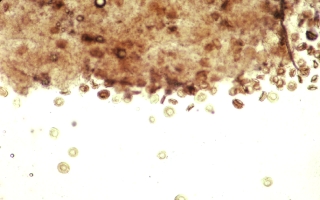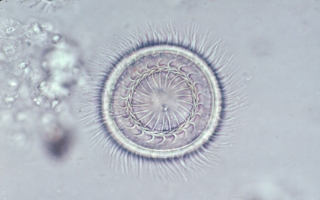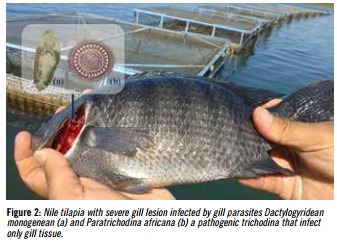
 tricodina
tricodina

 tricodina
tricodina
Tricodina sp.
Tricodinids are common protozoan ectoparasites found on tilapia from natural fresh and marine waters. The role of Tricodina sp. as a pathogen of tilapia is unestablished. Also, tricodinids are generally associated with deteriorating water quality conditions.
Tricodinids are circular saucer shaped ectoparasites that are actively motile while living. Often, tricodinids will be shooting around the field in wet-mount preparations. These protozoa are rimmed by cilia and on the bottom side have peculiar denticular rings with teeth that point toward the center of the organism. Tricodina sp. found on tilapia in Hawaii are about 0.04 mm. By comparison, a red blood cell is approximately 0.007mm in length.
Tricodinids multiply rapidly and have a direct life cycle. These organisms are identified microscopically, but there presence should not automatically be interpreted that they are the cause of disease in the fish. If however the tricodinid is very abundant (hundreds) and the tilapia display signs of respiratory distress, then the organism may indeed be the cause of a problem. Tricodina sp. apparently damage the gill surface at points where they attach.
The literature indicates that tricodinids are affected by common chemicals used in bath treatments to control protozoan ectoparasites of fish. Formalin, copper sulfate and potassium permanganate are often given as effective for treatment of Tricodina sp. However, none of these chemicals have been approved by the FDA for use in the treatment of tilapia. tricodina

See also: